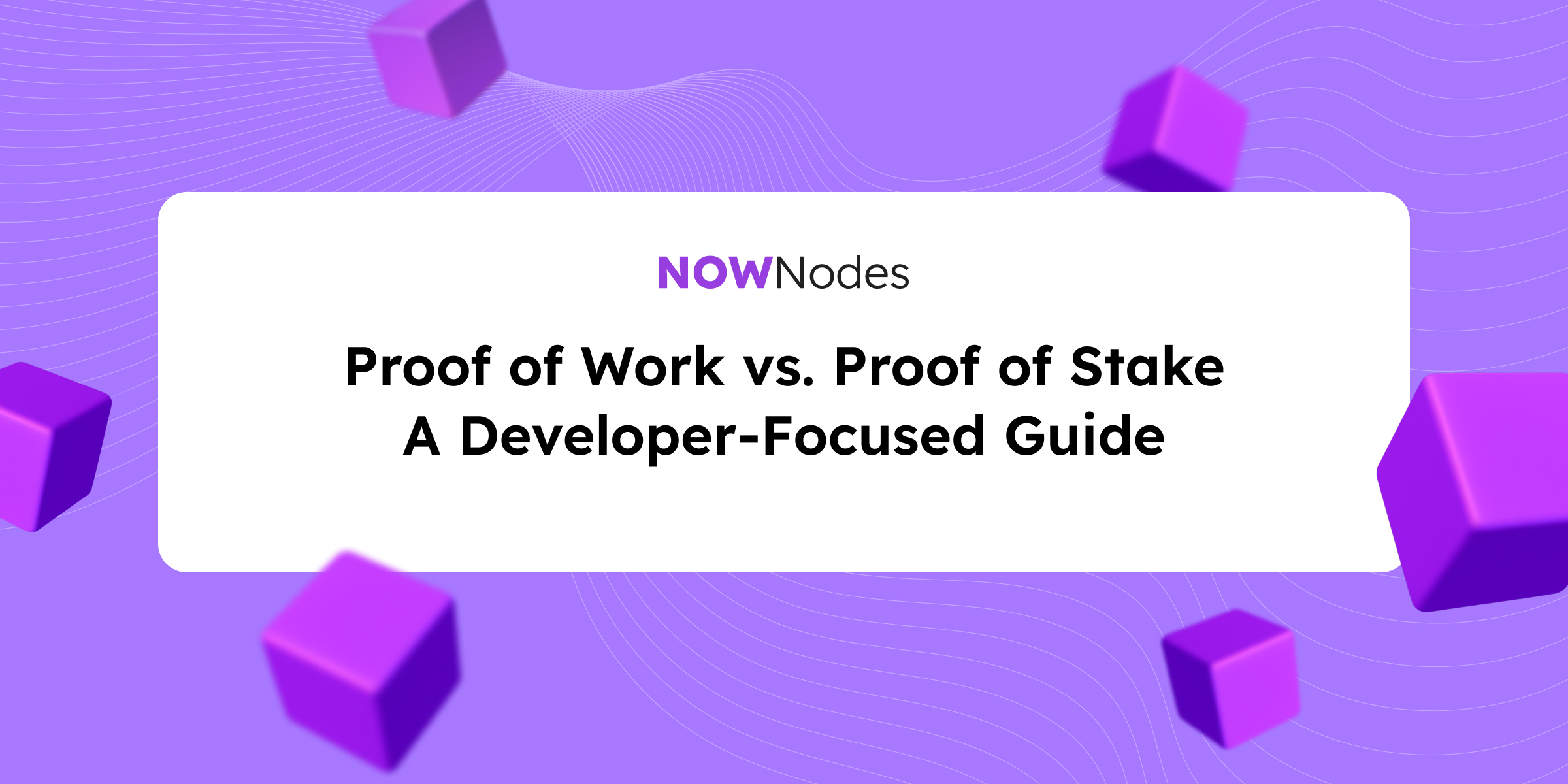Blockchain networks rely on consensus mechanisms to validate transactions and secure the network. For developers and teams building with blockchain RPC (Remote Procedure Call) providers, understanding these mechanisms is critical. The two most prominent models – Proof of Work vs Proof of Stake – directly impact node infrastructure, RPC latency, and network scalability.
In this article, we’ll break down PoW and PoS, explain their impact on node performance, and help developers make better decisions when integrating with blockchains via RPC endpoints.
What Is Proof of Work (PoW)?
Proof of Work is the original blockchain consensus model, pioneered by Bitcoin and used by Ethereum until its Merge to Proof of Stake in 2022. In PoW:
- Miners solve cryptographic puzzles to compete for block rewards.
- Mining requires extensive computational power and specialized hardware.
- Network security is maintained by the costliness of participating in mining, deterring malicious actors.
Pros and Cons of PoW
Pros:
- Proven security on Bitcoin and legacy Ethereum.
- High decentralization among mining pools.
- Simple economic incentives: more work = more reward.
Cons:
- Extremely energy-intensive.
- Slower block production and finality.
- High barrier to entry due to expensive mining equipment.
What Is Proof of Stake (PoS)?
Proof of Stake removes energy-heavy mining and instead uses staked cryptocurrency to secure the network. Validators propose and attest to new blocks based on their stake.
In PoS networks like Ethereum post-Merge:
- Validators lock ETH as collateral.
- Block proposers are selected pseudo-randomly.
- Validators earn rewards, but face slashing for malicious activity.
Pros and Cons of PoS
Pros:
- Dramatically lower energy consumption.
- Faster block confirmation and network scalability.
- Lower hardware requirements; anyone can run a validator node.
Cons:
- Potential wealth concentration (larger stakes = more validation power).
- Relatively new security model compared to PoW.
- Slashing penalties may deter some participants.
Proof of Work vs Proof of Stake: Technical Comparison for RPC Providers
| Feature | Proof of Work (PoW) | Proof of Stake (PoS) |
|---|---|---|
| Energy Consumption | High | Low |
| Consensus Participation | Miners with specialized hardware | Validators staking native tokens |
| Block Creation | Computation-heavy puzzle solving | Stake-weighted random selection |
| Network Security | Hashrate protects network | Economic penalties secure participation |
| Ethereum Use Case | Pre-Merge | Post-Merge (Ethereum 2.0) |
| RPC Node Resource Usage | Higher disk and CPU demands | Lower energy, improved consistency |
Consensus Mechanisms and RPC Performance
For developers using a blockchain RPC provider, consensus affects:
- Block finality: PoS networks like Ethereum finalize blocks faster, improving the reliability of RPC queries like
eth_getBlockByNumber. - RPC response times: PoS offers reduced variance in block production, leading to smoother request performance.
- Node maintenance: PoW chains require nodes to process frequent chain reorganizations, increasing the load on RPC infrastructure.
- Scalability: PoS chains support more transactions per second, reducing RPC rate-limiting during high usage.
Conclusion
Both Proof of Work and Proof of Stake play vital roles in blockchain ecosystems. While PoW remains a pillar of Bitcoin’s security, PoS is becoming the consensus standard for next-generation blockchain networks due to its scalability and energy efficiency.
For blockchain developers, choosing an RPC provider that is optimized for these consensus differences is crucial. At NOWNodes we provide fast, secure, and reliable access to decentralized networks—whether PoW or PoS powers them.



